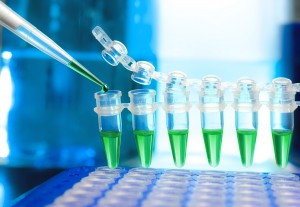Science & Technology, Singapore (Commonwealth Union) – A research team from the Cancer Science Institute of Singapore (CSI Singapore) at the National University of Singapore, that was led by Associate Professor Takaomi Sanda and Dr Lim Fang Qi, may have a possible new application to an existing drug, for countering a type of blood cancer known as T-cell acute lymphoblastic leukaemia, or T-ALL.
The utilization of an existing drugs for a new application has the added benefit of avoiding certain phases in a clinical trial as it has already been tested for prior to its approval, thus shortening the time it can be made available to the public. The repurposing of existing drug will usually have trials seeking how effective its new application will be.
The drug, known as PIK-75, was 1st discovered over 10 years back, however it was rejected in favor of newer ones. Presently its repurposing has deemed it unmissable. Researchers have established that the drug is capable of halting not just 1 but 2 essential cancer-causing pathways of T-ALL, making way for them to form new treatments able to stem the disease with efficiency.
T-ALL that mainly impacts children is described as an aggressive and progresses fast having an impact on stem cells in the bone marrow responsible for T-cell production. The T-Cells are essential for fending off infections. The condition leads to a production of immature, T-cells that that get collected and become too large for normal counterparts to handle, resulting in a patient compromising their immunity. Many patients who have recovered on prior occasions from pediatric T-ALL can end up relapsing, and in certain instances be unable to respond to 1st line therapy.
“Current cancer treatment strategies mostly focus on targeting a single molecule specific to the disease, like an oncoprotein,” added Associate Professor Sanda, who is the lead author of the study. “We learned that the ability of cancer cells to survive and proliferate is underpinned and promoted by multiple mechanisms, of which identifying and inhibiting just one is often not sufficient to slow the march of the disease.”
Taking this into account the researchers detected the applicable underlying pathways. This made it possible for them to take actions to destroy all possible routes, the disease is capable of making to expand throughout the body.
Many cancer researchers across the globe have often suggested multiple different approaches will be needed to outsmart cancer.
In T-ALL, the mechanisms pushing the disease to advance can be differentiated into “type A” and “type B” abnormalities. The researchers gave a key example of the former as the overexpression of the TAL1 oncogenic transcription factor, with powerful proteins that support the multiplication of cancer cells and are common in almost 50% of all human T-ALL cases. When compared, type B is characterized by the activation of an unusual signaling pathway like the PI3K-AKT-PTEN pathway, that is a series of reactions in which a group of proteins of a cell collaborate to control the cell functions. This eventually enhances the emergence of cancer cells. Together, both these mechanisms work together, backing the proliferation of malignant T-ALL cells within patients.
“Focusing on an ‘oncogenic collaboration’ mechanism, we demonstrated the efficacy of the novel therapeutic compound in inhibiting the core oncogenic machinery — which includes both type A and type B abnormalities — that drives T-ALL progression,” said Associate Professor Sanda. “PIK-75 produced a strong cytotoxicity against T-ALL cells at low doses compared to previous studies involving other types of drugs that required higher concentrations to inhibit their growth.”
The researchers’ efforts were a notable contribution to NUS’ focus of research breakthroughs in biomedical science and translational medicine. The researchers’ findings appeared in the scientific journal Haematologica in September last year.







